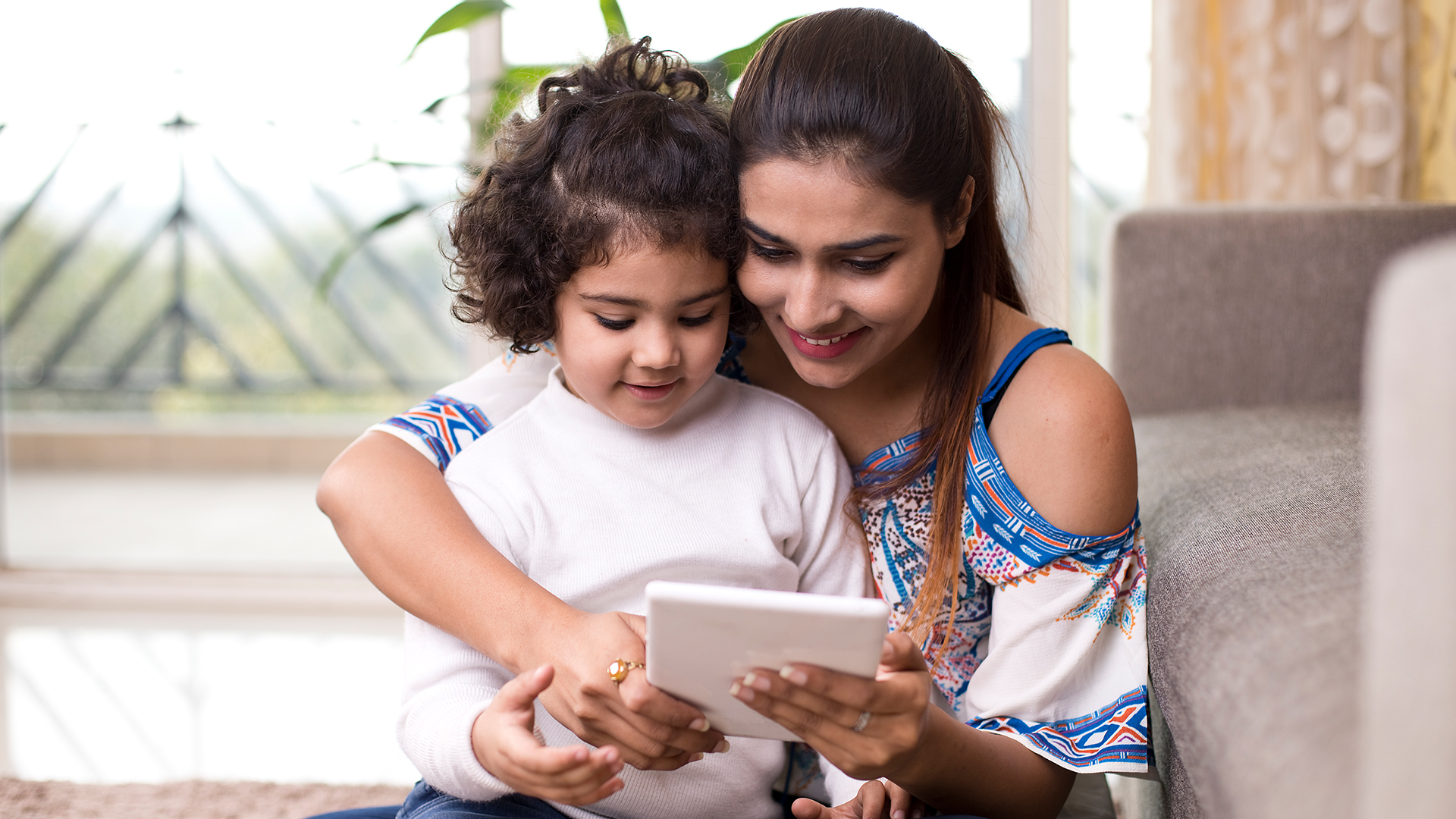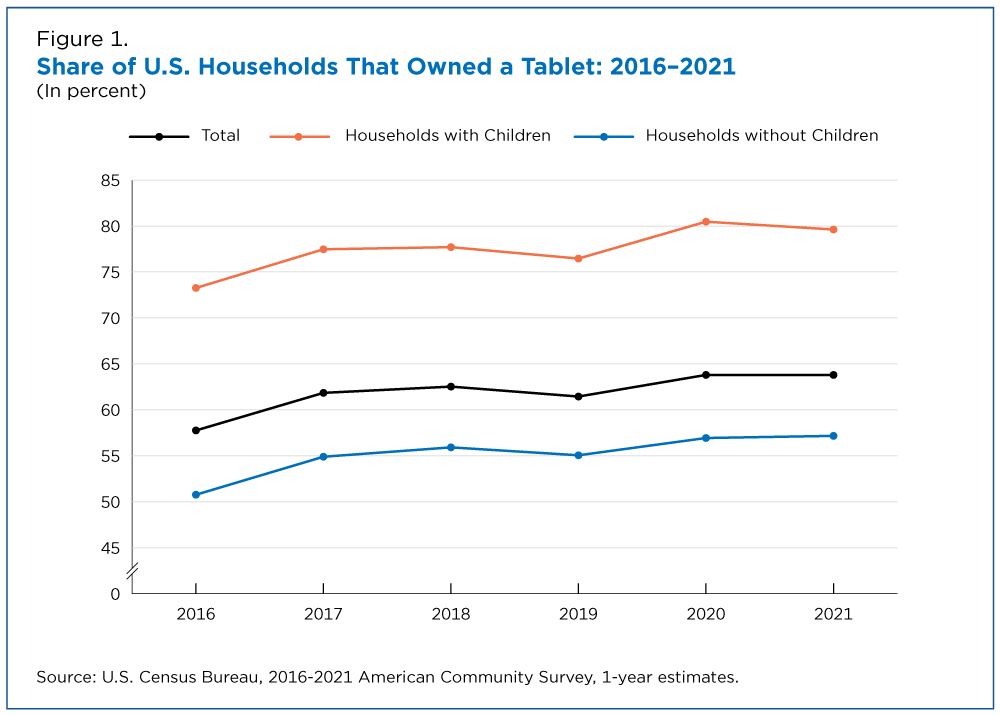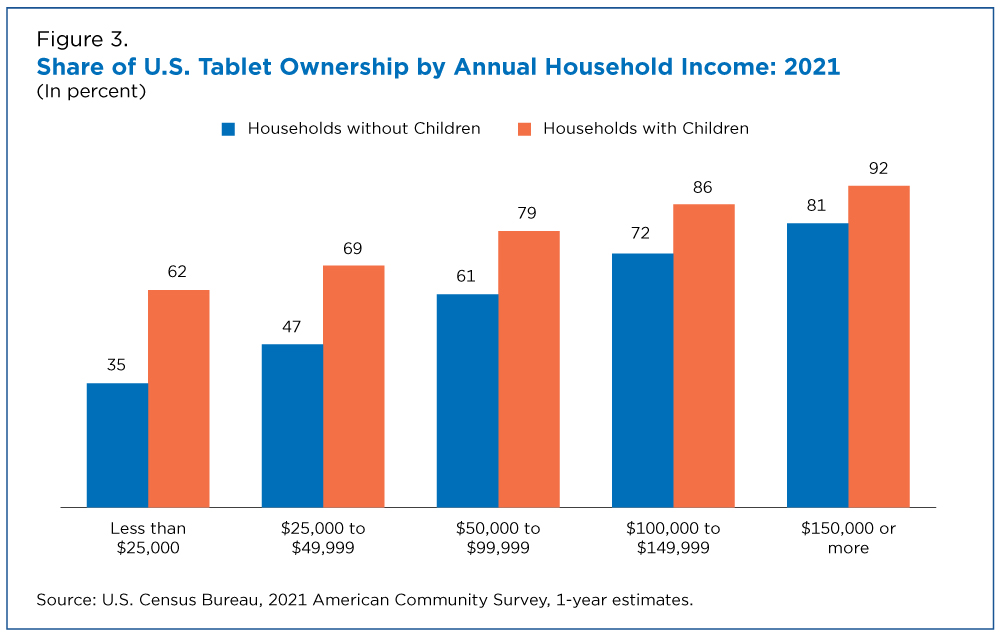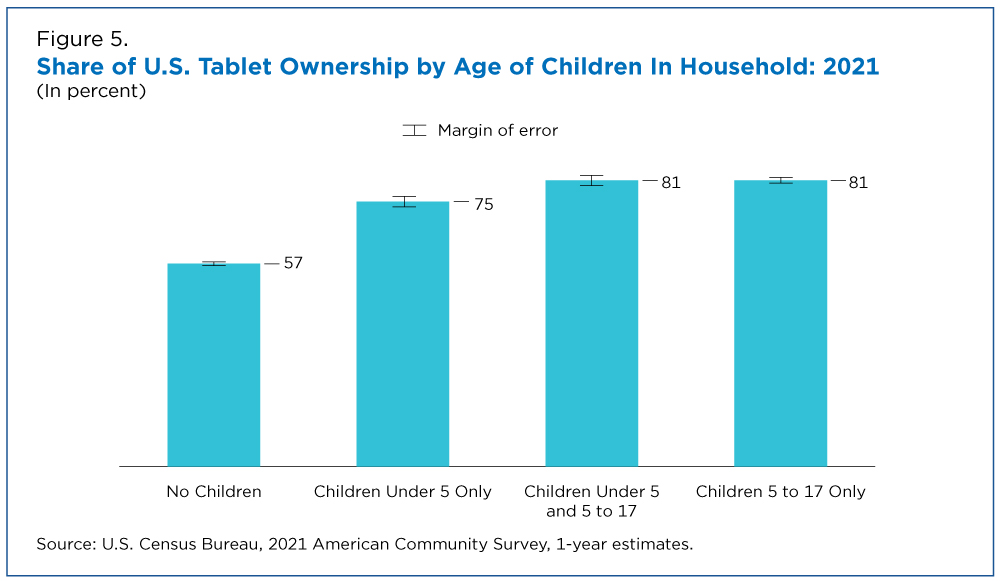Four Out of Five Households With Children Owned Tablets
Tablet ownership in U.S. households with children was 22 percentage points higher than in households without children in 2021, according to the most recent American Community Survey (ACS) 1-year estimates.
While households with children (under 18 years old) had higher rates of computer ownership and internet subscription than those without children, one of the largest differences was for so-called tablets — wireless, notebook-sized computers with touchscreens.
Tablet Ownership Over Time
The ACS began asking about tablet ownership in 2016, when we updated computer and internet questions to account for changes in technology.
Tablets were more common in households with children even after controlling for various socioeconomic characteristics that can affect computer ownership.
Since then, the survey has tracked ownership of three device types — laptop and desktop computers, smartphones and tablets or other portable wireless computers — as well as other devices not in these categories.
Every year from 2016 to 2021, households with children owned tablets at a rate at least 21 percentage points higher than households without children (Figure 1), according to ACS 1-year estimates.
Overall, 64% of U.S. households owned a tablet computer in 2021. Broken down by age of household members, 80% of households with children owned tablets compared to only 57% of households without any children.
This gap varied little over time, ranging from a difference of 21 percentage points in 2019 to 24 points in 2020 — an average 22-point difference from 2016 to 2021.
Householder Characteristics
Tablets were more common in households with children even after controlling for various socioeconomic characteristics that can affect computer ownership.
Tablets were more common in households with children across all levels of education (Figure 2), income (Figure 3) and race and Hispanic origin of the householder (Figure 4).
Among households in which the householder had less than a high school education, 60% with children owned a tablet compared to 32% without children.
Similarly for households earning less than $25,000 per year, 62% with children owned a tablet compared to 35% without children (a gap of 27 percentage points).
At the highest education and income brackets, differences in device ownership reflected higher overall ownership rates.
When a householder had a bachelor’s degree or higher, 89% of households with children owned a tablet compared to 70% of households without children.
Among households earning $150,000 or more, 92% with children owned a tablet compared to 81% without children.
Non-Hispanic White and Black householders showed the largest difference in tablet ownership between households with and without children, both with at least a 24-percentage point increase for households with children.
Asian, non-Hispanic householders had the smallest gap in tablet ownership between households with and without children, again reflecting higher overall ownership: 85% of Asian households with children owned a tablet compared to 68% of Asian households without children (a 17-point gap).
Impact of Children’s Age
Having a child of any age was associated with higher tablet ownership. But households with at least one child 5 years old and over were the most likely of any child age group to own a tablet (Figure 5).
- In 2021, 57% of households without any children owned tablets. The share jumped to 75% in households with children only under the age of 5.
- In 2021, 81% of households with only older children — between the ages of 5 to 17 — owned tablets.
- The same share (81%) of households with both young and older children — under 5 years old and between 5 and 17 years old — owned tablets.
Screen Time for Children
Computer and internet use questions on the ACS were first introduced to assess Americans’ access to broadband internet.
While internet access can be beneficial for connecting with family and friends, playing, learning and more, there are also concerns about kids’ exposure to screen time.
The National Survey of Children’s Health in 2020 reported that 26% of children spent four or more hours per day in front of a TV, computer, cellphone or other electronic device during the week (outside of schoolwork).
The American Academy of Pediatrics recommends limiting screen time to one hour per day for children 2 to 5 years of age and offers information for creating a Family Media Plan for members of the household of all ages.
Subscribe
Our email newsletter is sent out on the day we publish a story. Get an alert directly in your inbox to read, share and blog about our newest stories.
Contact our Public Information Office for media inquiries or interviews.











